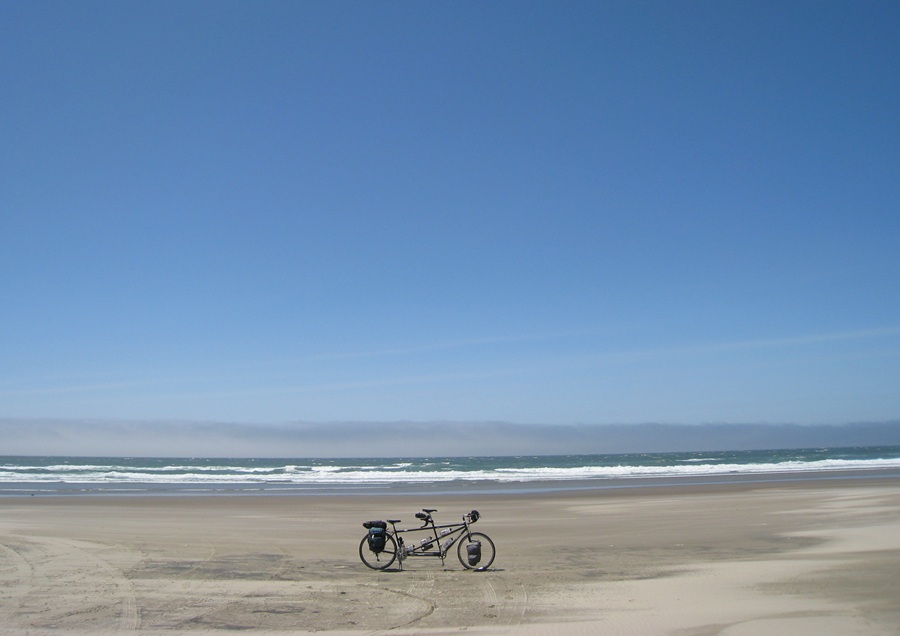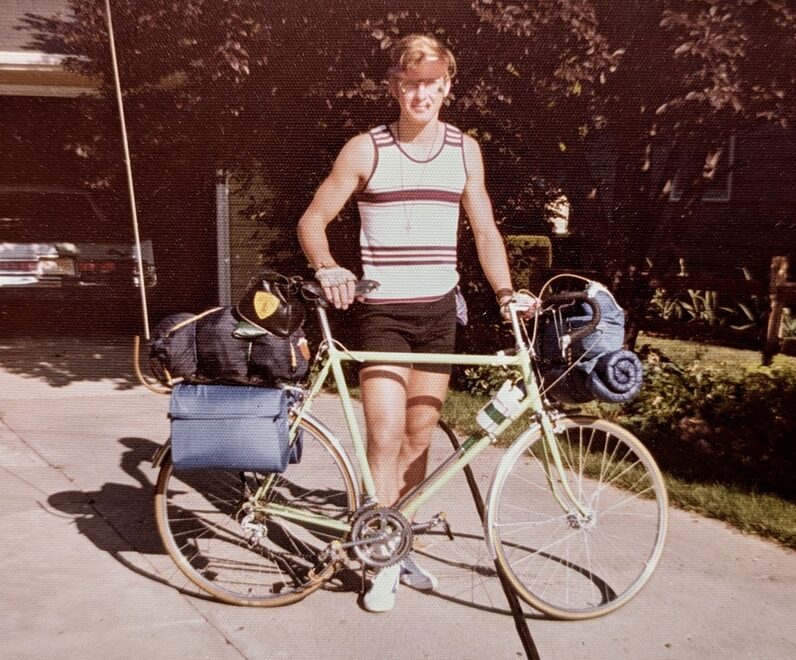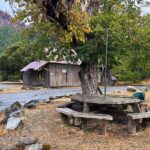Those were my panniers going down the road but not on my bike and not carrying my gear. At best, they were filled with envy, which was all mine, because they were headed for a ride across America — Bikecentennial ‘76. I’d loaned the bags to Jesse, a classmate with a wild, gentle spirit, and I didn’t begrudge him anything.
But it didn’t seem fair: I was the one who worked in a bike shop, taught a cycling class for the college and started the campus bike cooperative. I had the touring experience, the knowledge, the gear, the desire but not the scratch: I needed to stay and work for the summer to pay tuition. At least my panniers would have an adventure.
Watching them go with Jesse down to the train station, I had a rare moment of conviction: I promised my disappointed self that I would ride across the country when I retired. This seemed fair — work first, then the reward — and far enough out to be plausible without requiring anything immediate.

But now I am retired, and although the promise flickers, the road ahead has narrowed. It has been a good road — many, many good roads over many long years — from the first green panoramas of my Michigan home to the Rockies, the Sierras, the Alps, the Pyrenees, and crossing the beauteous Andes from both sides multiple times. And most of those with my bride riding stoker on our tandems.
Along the way, we lived in Montana, and I was thrilled to regularly visit what had become, after 1976, Bikecentennial headquarters in Missoula. I did some writing for the magazine and felt privileged to pick my way through the lumber and drywall as the new home on Pine Street came into focus. That it was a church building seemed perfectly fitting; I worshipped there.
Which made the recent news of the decision to sell the building all the more ironic for me, because I know churches and worship: I retired as a United Methodist pastor. I spent over half my career in regional administration for the denomination, which is to say, the institutional business side of a large volunteer membership organization.

So, when Adventure Cycling’s board described their business challenges — membership aging out (me), lack of new and younger members, diversification of interests and styles of riding, the impact of new technologies, remote work leaving empty properties — it was a lightbulb moment. I’d spent years teaching church folks to recognize the business aspects of their beloved fellowships in order to face, and hopefully overcome, their own stagnation and decline. Now my Church of the Wheel was facing the very same difficulties.
With that realization came real concern. I had witnessed first-hand and pre-emptively taught that when faced with deep change to something deeply valued, most people respond with anger, denial, and blame — basically, anticipatory grief. The pushback is often volatile, which simply proves the depth of our passioned experience, and the challenge to our very sense of identity.
Which sounds academic, until you’re on the side of a gravel road, straddling your bike, shivering in sleeting rain, struggling to get a frozen hand into the sleeve of your last jacket layer, on the precipice of a snaking descent into a grey void with no visible end in sight, and thinking: I can’t do this anymore.
We’d come to Patagonia one more time, one final epic adventure, with the shared promise that after this, the next tour would be a circumnavigation of Paris marked by red wine and daily elevation gains measured in double digits at most. But first, the Torres del Paine, Mount Fitzroy, and the roadless “jungle drag” to Villa O’Higgins where we’d last left our mark at the end of the Carretera Austral.
The planning was exquisite, the gear dialed in, the training 95%, and the weather apocalyptic. The second day was a puny 21 miles in seven hours, the wind slamming our fully loaded tandem into the dirt multiple times. We made it off the sleeting ridgeline just barely before the National Park closed behind us due to the weather.
By the next day, with foul weather predictions in hand, there was going to be a Plan B whether we liked it or not. And despite the investment in time and equipment and training, it would not include riding. The bike would be disassembled into the travel cases, the gas for the stove poured out. Our last grand tour was over, and it was apocalyptic in the original meaning of the word: a revelation. We were not going to be touring cyclists like we had been anymore.

The road has narrowed, indeed.
I’ve since wrestled with the impossible. First and foremost, I AM A CYCLIST, fundamentally a touring one. But if I don’t ride another ‘real’ tour, can I still call myself that in the present tense? Or do I start selling bikes before I absolutely have to? We never know which will be our last tour, much less our last ride, or our last day this side of the grass. But to choose it? Tough.
Easier to project that change, that loss, onto other unwanted changes and rag on that. Easier to insist things are the same, will stay the same. Easier to keep all the bikes in the garage, even pump the tires up on the dusty ones now and then. Never mind the bike co-op a few blocks away that could put those bikes under some eager kids. Get off of my lawn! I could slide into that …
Instead, I’m trying to be a true cyclist. What does a cyclist do when a tire goes flat? Fix it. Another climb? Shift down, hydrate. Road closed? Pull out the maps — or now the apps. A narrow road is still a road, paved or unpaved, and everything I’ve learned from cycling, especially touring, still holds true: we assess the ride, the weather, the conditioning, choose the gear and distance that matches where we’re going. No need for the kitchen sink when a tall water bottle will do. We figure it out and get it done.
Cyclists are of necessity and naturally curious, flexible and adaptive, challenge-seekers and problem solvers. The current shifts in the cycling industry and cycling culture are verses in the long song of the road, paved and gravel and dirt, “as it was in the beginning.”
And honestly, to look at how many people are getting into cycling today, in such an incredible diversity of ways, brings tears to my eyes. My road has narrowed, but the number of roads, rides, and riders has exploded, again.
Hopefully I’m preaching to the choir. It’s good to remember that the history of cycling has ebbed and flowed from the very beginning but never dismounted. Flying on two wheels satisfies a deeply visceral need for the sense of freedom that only comes from engaging the body.
Whatever and wherever they’ll be riding another 50 years from now, they’ll be riding, which is all that matters. I hope to have something to do with it while I can, even if it’s just sharing my stories over the soft whir and click from my tall stacks of slide carousels. I hear the kids are into that now, like vinyl. Amen to that.
The post The Narrower Road appeared first on Adventure Cycling Association.




